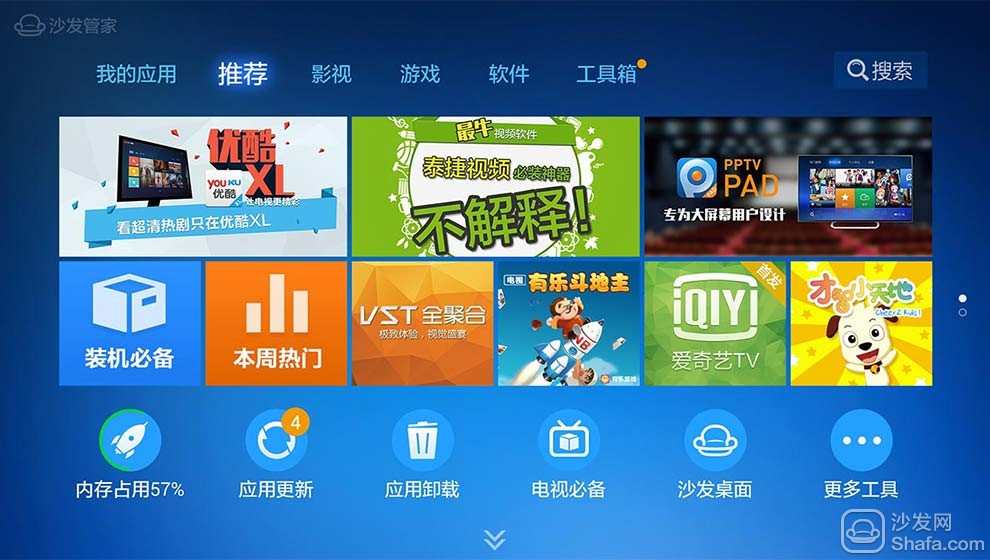
China leads in 5G era, but is it enough to lead?
With more than 2,400 CEOs participating in MWC2015, it is not at the forefront of industry exhibitions. The exhibition has already surpassed the traditional telecommunications industry. IBM, Microsoft, Facebook, and other cross-border manufacturers are all participating in the event, which is already the world's largest ICT event. Such a grand meeting, under the surface of prosperity, has concealed a lot of inherent difficulties. 5G is one of them.
The first major highlight of the show was the category of 5G. Although the 5G standard and commercial use will not be completed until 2020, Ericsson, Huawei, and ZTE have adopted a more aggressive strategy than Nokia Communications and Alcatel-Lucent to take the lead in running 5G. For example, Ericsson demonstrated the 5G wireless test bed, ZTE pioneered the PRE 5G prototype, and Huawei even considered 5G as the cornerstone of future technology. Both are relatively leading positions – of course, Samsung is worth mentioning in terms of patent reserves.
In order to get rid of opponents ahead of schedule, in the early layout of 5G, now also formed a new melee pattern: Europe is dominated by Ericsson Nokia, China is led by ZTE, South Korea is dominated by Samsung LG, the United States is dominated by Qualcomm Broadcom, Japan is NEC, NTT, etc. are dominant.
China will inevitably lead the 5G era
In fact, although there are many Korean manufacturers’ patents, they are mainly concentrated in the terminal field and the local market is narrow. Japanese standards have always been closed and it is difficult to dominate the overall situation. The 5G era still depends on the competition between China, Europe and the United States.
In the 2G era, GSM in Europe was overwhelmingly successful over CDMA in the United States; in the 3G era, WCDMA due to the U.S.-Japan joint victory over U.S. CDMA2000 and WiMAX, China’s TD-SCDMA can only say that it seized a tail and realized the arrival; it reached 4G. In the era, CDMA network technology basically quit the system equipment competition. LTE can be said to be promoted by Ericsson. ZTE's Huawei took advantage of the integration of TD-LTE and FDD LTE to achieve local advantages, becoming one of the top three in the 4G era... Of course, One exception is Qualcomm. Although it does not represent the overall influence of the United States, its advantages in patents, laws, and chips are very obvious. Together with Apple and Microsoft's patent advantages on the terminal side, the 4G era is still three-fold.
However, at the time of 5G escalation, China and Europe may become the dominant forces, and the United States is likely to decline in value, ultimately overturning the traditional pattern. why? The core depends on the three driving forces.
First of all, on the standard and patent layout, China will be so early from the future. In the formulation of the 5G standard, the IMT2020 alliance has become the standard organization next to the European METIS and 5GPP. The essence is that Huawei, ZTE and Ericsson, Nokia, lead the United States' IEEE. In terms of 5G patents, although Qualcomm has a relatively early layout, there is no more patent dominance in the 3G and 4G eras, plus anti-high-quality patent investigations by China, Europe, and South Korea, and MTK, Huawei Hass, Tsinghua Unisplend, and other chip vendors. Pressing hard, it is difficult for the United States to continue its dominant position on 5G, and patents and chips will weaken after the equipment is abdicated.
Second, in the commercial process, China, Japan, and South Korea first stood in the same leading echelon. In the past 3G and 4G construction process, Japan and South Korea have always been the world's leading players. Sweden, Finland and Finland where Ericsson's Nokia is located are close to it, and the United States and Europe are once again. The commercial process will undoubtedly greatly promote the maturation of equipment and terminals. Local advantages cannot be ignored. Nokia and Ericsson have a leading technology in the small projectile and have a great relationship with the state support. However, at the beginning of 5G, China Mobile, Japan NTT, and South Korea KT formed a 5G alliance. China's core cities and Japan and South Korea are expected to synchronize commercial trials of PRE 5G technology, thus becoming the earliest pilot in the world. In China's current 4G network market, Huawei and ZTE occupy approximately 75% of the market, both of which have a market share of 30-40%, and will undoubtedly be close to the waterfront in the construction of 5G, which will further increase the dominance.
Third, the strength of Huawei and ZTE continues to increase, and their competitiveness is not the same as before. Huawei is now the largest telecommunications equipment operator. ZTE is the fifth largest. ZTE is expected to equal or even surpass Nokia in 2015 and gradually approach Alcatel. Huawei will increase the gap with Ericsson. In this case, it will develop 5G. Its strength in investing funds will undoubtedly accelerate the pace of catch-up. In the field of LTE, Huawei ZTE has become the world’s top five EP core patent owners; in the 5G era, it is not only core patents, but also some higher-quality basic technologies, such as Huawei’s air interface technology and ZTE’s foundation in Massive MIMO. The patents are globally leading.
In this case, China’s leading position in the field of 5G is almost certain.
Running beast?
Although the distribution of the industry pattern is the same, from the perspective of the ICT, all telecommunications companies may behave like running beasts, winning technology and losing the pattern. On the one hand, it still maintains strong innovation on the premise of 5G technology development. On the other hand, what applications will be carried under the bandwidth of 1G or even 1T in the future will bring real benefits to operators and equipment manufacturers. Not clear.
In the process of communicating with technical experts on the spot and equipment vendors, the author found that people still tend to regard 5G as a technical concept and a solution instead of a Biz model (business model)! This is a very deadly bottleneck.
Let us recall that in the 3G era, not the 3G technology itself, but the mobile Internet has become a truly revolutionary force. Although faster Internet speed is the premise of the mobile Internet outbreak, but in the end it did not get a lot of dividends from it. The financial reports of the three major operators have shown this very well. Moreover, even from a technical point of view, HSDPA, which is 3.5G technology, truly solves the problem of mobile Internet user experience speed. The new smart terminals created by Apple truly solve the depth of the user experience, rather than the so-called narrow 3G technology. .
In other words, the technological revolutionary is only building the project team of the house, earning a single hard-working money; the operator is only the holder of the commercial real estate - in the era of excess, this real estate is a capital project, but cannot realize the property price. The appreciation of the revaluation type; on the contrary, Internet companies, the use of long-term cheap rental here is increasingly prosperous. In the era of 3G and 4G, if there is no innovation, especially business model innovation, will it not repeat the old path in the 5G era?
If you do not want to repeat the mistakes, telecommunications equipment manufacturers, telecommunications operators must have a new thinking, must pull 5G out of the purely technical category, pull out a purely pipelined path, truly control the user-facing interface, facing the main channel of the flow of cash. In addition, it is to enter the field of IT and the Internet of Things to achieve horizontal expansion. We did not see such a clear idea at the show. The RCS pushed by China Mobile and ZTE Corporation can be considered as an attempt. Ericsson emphasizes that it will enter the cloud market. Huawei will emphasize the Internet of Things. In the latter one, I will analyze it in detail.
Non-subversion and non-revolution, operators and equipment vendors have a huge distance from the Internet as a self-growth ecosystem, and the river can't run any longer when it is wide. Therefore, we have seen that the telecommunications industry is running at a high speed on the technical track, and even running faster than expected; on the other hand, it is also facing the overall dilemma. The houses built and the highways built will eventually make more profits. money?
The late 5G technology standard may not be so important. It is more important to enrich the 5G content.
Recommended installation sofa butler, download address: http://app.shafa.com/

Hot Apps Recommended: HDP VST All-in-one Fast-viewing film Dragons Live Karaoke King TV Thumb Playing ZAKER